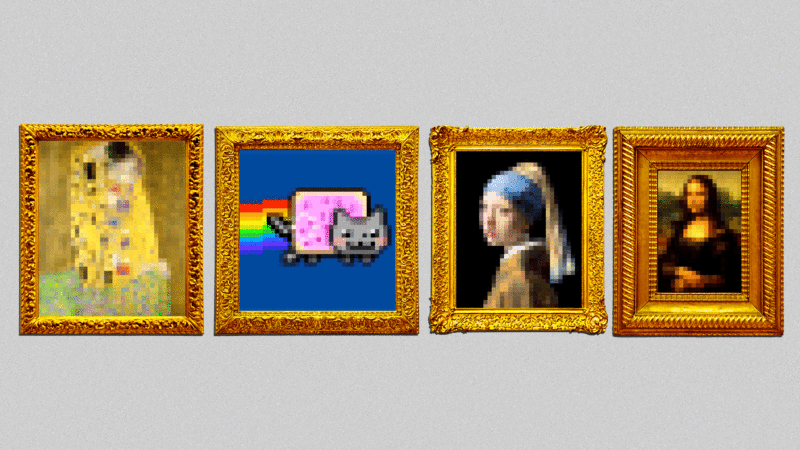More than 100 years ago, Marcel Duchamp started an artistic revolution when he signed a urinal with “R. Mutt 1917,” gave it the title Fountain, and entered it in an exhibition of the Society of Independent Artist in New York. It was the first conceptual art object, where the idea was more important than the form. The urinal was art because Duchamp chose it and said it was art. More than that, this brash gesture was a provocative reflection of modern life that celebrated things like plumbing and technology – the same technology that made trench warfare and mass casualties possible during The Great War. With this urinal, Duchamp said, “This is who we are.”
NFTs (non-fungible tokens) are creating a revolution in the same, cynical manner. Nothing better embodies the commodification of art than the sale of non-art for astronomical prices. Let’s be clear: NFTS are not good visual art by any traditional standard, but they are outstanding conceptual artifacts.
An NFT is an original digital work of art that is sold in a limited edition with cryptocurrency using blockchain technology, which is a digital ledger that stores the transaction data permanently, so the buyer has a lasting record of both ownership and authenticity. This is a big deal for collectors. A lot of art cannot be authenticated with absolute certainty because the provenance, or the history of the ownership of the artwork, cannot firmly be established.
In many ways, we got what we deserve. The fetishization of the authentic object occurred over time by art authorities such as museums, art galleries, and art critics, and the market followed suit. It may be hard to imagine that at the turn of the 20th century, most major museums had plaster casts of ancient sculptures that were considered original art beyond any shadow of a doubt. By the middle of the 20th century, with art movements such as Abstract Expressionism, the art experts defined art as a unique expression of an individual, and the art market required proof.
As rarity (and its proof) became paramount in determining value, those who traded in these authenticated objects were able to corner the market and demand higher and higher prices. Now in the 21st century, prominent art market venues – the largest auction houses and galleries – are in control of the exclusive and highly profitable exchanges of these precious objects. Remarkably, art by only 25 artists represents approximately half of the annual auction returns for Post-war and Contemporary Art.
Artists who make NFTs are outside this art world institution, creating their own market in their own virtual spaces by offering art that is undeniably authentic. And they are sticking it to the man by unabashedly stripping conventional notions of aesthetics from the objects and aping its commodification, trading for higher and higher prices.
Another grotesque feature of this commodity is its environmental cost because it takes a tremendous amount of energy from computers constantly at work to mint an NFT. One researcher calculated that a certain artist selling two pieces of artwork used over 175 MWh, creating the greenhouse gas emissions of 21 years of a U.S. household’s electricity use.[1]
Nothing has embodied the ugliest side of the art trade and its high cost as well as NFTs. They are brilliant conceptual works of art.
[1] 21 years of household energy use calculated based on EPA GHG equivalency of energy use; 176,773 mWh figure via Joanie Lemercier on Twitter.
Illustration: Aïda Amer/Axios, Feb. 25, 2021

